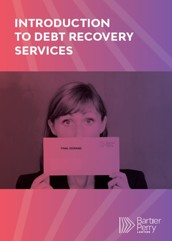Debt Recovery
Securing money owed to you can be time consuming, frustrating and ultimately futile if your options for debt recovery legal services are not clearly understood. In extreme cases, an unpaid debt can lead to the failure of the creditor’s own business and negatively impact your cashflow. Seeking legal advice early can help you recover the debt efficiently and protect your business interests.
We are experts in helping clients recover money that is owed by another business. We have a detailed understanding of the legal remedies available to you, as well as a finely tuned commercial sensibility that allows us to create workable solutions without recourse to expensive litigation. We pursue both formal and informal channels until a satisfactory outcome is reached.
In addition, we help clients set up robust terms of trade and internal systems that minimise late payments from debtors, properly secure any debts, and provide options and fast and efficient recovery. We work closely with our clients’ accounts departments to ensure our proposals can be easily adopted without disrupting BAU processes.
Speaking to us as early as possible is a smart approach. Generally, the sooner payment issues are addressed with the debtor, the sooner payment is made. Delays can result in the debtor finally running out of money before you reach them, or your options for debt recovery becoming fewer. We can help you take appropriate action that delivers desired results.
Caveats
Caveats affect many areas of the law. It is a legal instrument that can be registered on the title to property by a person or organisation. The caveat operates as a statutory injunction and prevents the registration of particular dealings and plans on a title without the caveators express consent.
Learn more about caveats and how we can help.
We can:
-
Help you get back money you’re owed through informal as well as formal debt recovery. For prompt action contact debtrecovery@bartier.com.au to request our Letter of Demand.
-
Help set up your credit and debt process, so they properly protect your business from bad payers, and provide options for fast and efficient recovery if required.
-
Advise you where you stand on unfair preference claims, insolvent trading actions, proofs of debt, retention of title claims, PPSA and other technical insolvency issues.
-
Help you reach a workable and commercial solution through negotiation and other alternative dispute resolution.
-
Actively manage the debt recovery process for multiple debt portfolios through our unique file management system.
-
Help you develop your own internal recovery system to help reduce the need to engage lawyers to chase down future outstanding debts.
-
Draft letters of demand and other process documents to prompt recalcitrant debtors into action.
-
Apply to wind up a company, pursue director guarantees, enforce charging clauses, access PPSA registered security interests, or take other legal action needed to protect your interests.
Don't let unpaid debts disrupt your business. Take control of your cashflow with our proven debt recovery legal services. Get expert advice and start your recovery process.
Explore our publications
Click the cover to read the e-book


















